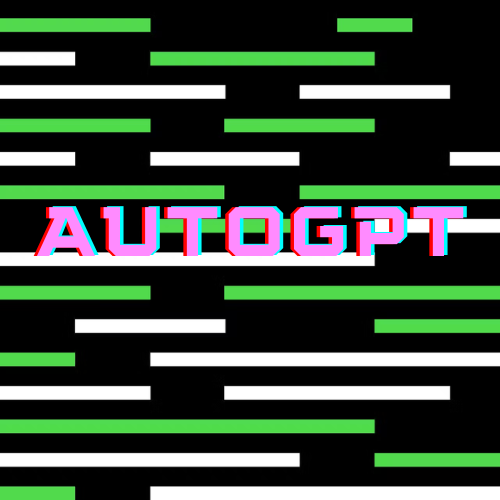Getting Started with AutoGPT: A Comprehensive Guide to Harnessing the Power of AI for Content Creation
AutoGPT is an advanced language model developed by OpenAI, utilizing the latest developments in artificial intelligence (AI) and natural language processing (NLP) to revolutionize content creation. This comprehensive guide will walk you through the process of getting started with AutoGPT, outlining its strengths and weaknesses, exploring its various applications, and providing you with practical tips and tricks to make the most of this groundbreaking technology.
Understanding AutoGPT
AutoGPT is a powerful AI-driven language model that can generate high-quality, human-like text by understanding and predicting context, grammar, and syntax. It is based on the GPT architecture, which has been refined and improved over time, culminating in the powerful GPT-4 model. AutoGPT learns from vast amounts of data and can be fine-tuned to understand specific niches, making it an indispensable tool for content creators, marketers, and businesses alike.
Why AutoGPT Matters
The rise of AI and machine learning technologies is changing the way we create, consume, and share content. AutoGPT presents a unique value proposition for content creators, as it can:
- Significantly reduce the time and effort required to produce high-quality content
- Enhance creative output by providing unique ideas and perspectives
- Help generate more targeted, SEO-friendly content that resonates with specific audiences
- Streamline and automate content creation workflows, freeing up time for strategic planning and other high-impact tasks

Setting Up AutoGPT
To get started with AutoGPT, follow these steps:
- Sign up for an API key: Register for an API key from OpenAI’s website. This key grants access to the AutoGPT service, allowing you to send requests and receive generated content.
- Choose a programming language: AutoGPT supports several programming languages, such as Python, JavaScript, and Ruby. Choose the language you’re most comfortable with or that best fits your project’s needs.
- Install the necessary libraries: Install the appropriate libraries and dependencies to interact with the AutoGPT API.
- Create your first script: Write a script that sends a prompt to the AutoGPT API and processes the generated content.
Leveraging AutoGPT for Content Creation
With AutoGPT set up, you can now integrate it into your content creation process. Here are some practical ways to use AutoGPT for various content types:
- Blog posts and articles: AutoGPT can help generate article outlines, introductions, conclusions, and even entire blog posts.
- Social media content: Use AutoGPT to create engaging captions, hashtags, and responses to comments.
- Ad copy: Generate persuasive ad copy for various platforms, such as Google Ads, Facebook Ads, or Instagram Ads.
- Video scripts: AutoGPT can be used to develop scripts for explainer videos, video sales letters, or YouTube content.**Email campaigns:** Craft compelling subject lines, email body text, and calls-to-action with the help of AutoGPT.
Optimizing Your AutoGPT Workflow
To make the most of AutoGPT, follow these best practices:
- Set clear objectives: Define the goals of your content before using AutoGPT. This will help you tailor the AI-generated text to your specific needs.
- Fine-tune the model: Customize the AI’s parameters to generate content that meets your desired tone, style, and complexity.
- Iterate and experiment: Don’t be afraid to experiment with different prompts, settings, and approaches. The more you use AutoGPT, the better you’ll understand its capabilities and limitations.
- Human touch: Always review and edit the generated content to ensure it meets your quality standards and aligns with your brand voice.
Addressing Potential Concerns
As with any AI-driven technology, there are potential concerns and challenges when using AutoGPT:
- Ethical considerations: Be mindful of potential biases in the AI-generated content and ensure that it adheres to ethical standards.
- Data privacy: Make sure to handle the data you send to the AutoGPT API securely and in compliance with data protection regulations.
- Overreliance on AI: Remember that AI-generated content should complement, not replace, human creativity and expertise.
Future Developments in AutoGPT
As AI technologies continue to evolve, we can expect further advancements in AutoGPT’s capabilities:
- Improved natural language understanding: AutoGPT will likely become even better at understanding complex sentences and generating more nuanced, contextually relevant content.
- More specialized models: We may see the development of more industry-specific AutoGPT models, tailored to cater to the needs of particular niches.
- Integration with other AI tools: AutoGPT could be combined with other AI technologies, such as image recognition or data analysis, to create even more powerful content generation solutions.
Conclusion
To finish, AutoGPT represents a significant leap forward in content creation, offering a wide range of applications and benefits for content creators, marketers, and businesses. By understanding its strengths and weaknesses, optimizing your workflow, and addressing potential concerns, you can harness the power of AutoGPT to revolutionize your content creation process and stay ahead of the competition.
Get started with AutoGPT today and discover the future of AI-driven content creation.



